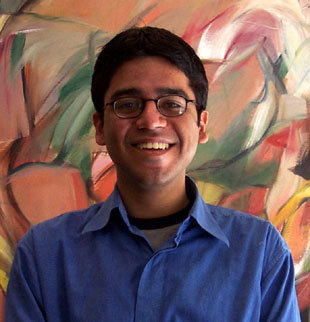
Department of Chemical Engineering
Room
66-463
Massachusetts Institute of Technology
77 Massachusetts
Avenue
Cambridge, MA 02139-4307 USA
Telephone (617) 253-6490
Email: bhalla@mit.edu

Gaurav Bhalla
Graduate Research Assistant
B.T., Chemical Engineering, Indian Institute of Technology, New Delhi, 2003
Research Interests
Hydrodynamic theory for osmotic reflection coefficients
My research investigates the osmotic flow of macromolecules in porous
membranes. The research is based on the modifications to the point-wise
momentum conservation equations necessitated by the presence of finite
sized molecules. In particular, my work will extend the model of the
Anderson and Malone (1974), wherein a mechanistic model for osmotic
flow of macromolecules in porous media is developed from classical transport
and thermodynamic considerations.
The significance of the pore is in the confinement of the fluid phase.
The presence of the pore wall then acts as a steric hindrance to the
solute molecule due to its finite size. The centroid of such a macromolecule
cannot be closer than a radius from the solute wall due to these steric
limitations. This limit can be thought of as a solute exclusion effect
or the development of a solute-wall potential field. The assumption
of osmotic equilibrium of the solvent then leads to the development
of a radial pressure gradient that must balance the potential force
acting on the solute. This pressure gradient in turn has an axial component
due to the dependence on the concentration which in turn drives the
flow. My approach is novel and has interesting applications in more
complicated geometries such as fibrous membrane and gels. Such extensions
are the main objective of my work.
A fundamental question that needs to be addressed early on is the issue
of the solute-solvent force interaction. The previous work assumes that
this interaction occurs at a point, an obvious choice for this point
being the center of mass of the solute molecule. However, strictly speaking
this force interaction occurs on a surface instead and therefore a "smeared"
solute-solvent force transmission would be a better approximation to
the true picture. Specifically my plan will address the following:
1 A better description of the solute-solvent force transmission;
2 Prediction of the osmotic reflection coefficient for capillary pores
with hard-particle-hard-wall interactions and the effect of the solute
size and shape;
3 The osmotic reflection coefficient for capillary pores with charge
effects;
4 Prediction of the osmotic reflection coefficient for fibrous membranes
and gels with parallel fibers with and without charge effects;
5 Experimental test of the model predictions.
Personal Interests
On my own I like to follow international cricket matches, especially the India versus Pakistan matches. And I follow the stock markets, doing a little bit of day trading on my own, with my almost hypothetical amount of money.